The black-tailed gulls of Kabushima Island
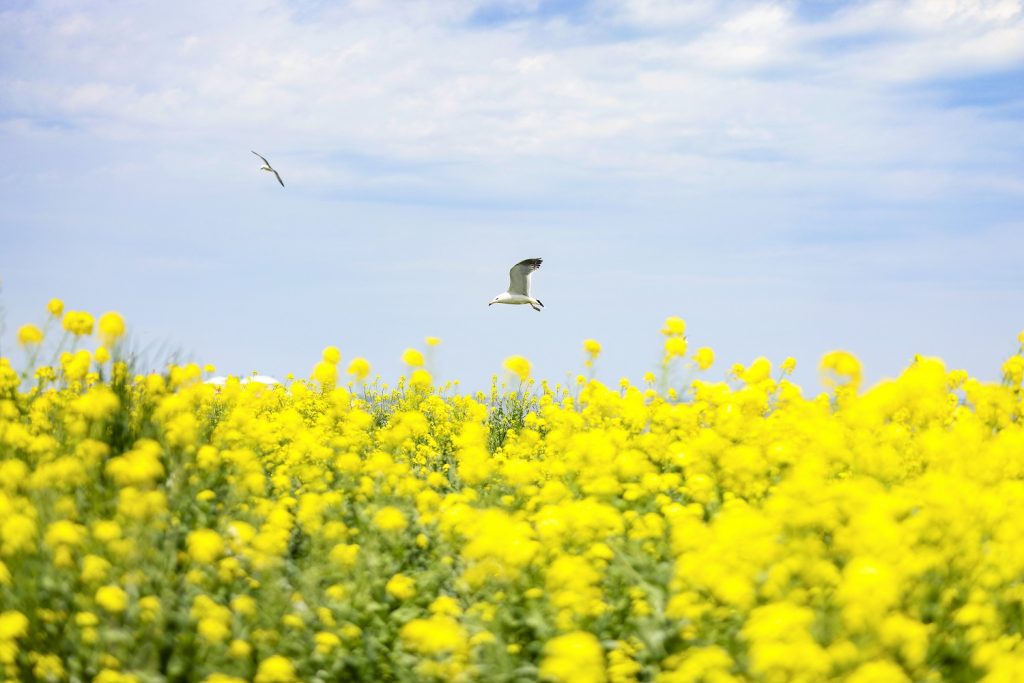
Leaving the JR Hachinohe Line’s Same Station and walking along the seashore, you’ll hear a squawking sound as a small island, linked to the land by a road, comes into view. This is Kabushima Island, designated a National Natural Monument as a breeding ground for black-tailed gulls. Every year black-tailed gulls come here to raise their chicks from March until about August. The island is packed with birds, said to number between thirty and forty thousand.
The black-tailed gulls have been important to Hachinohe since ancient times as they indicate the location of fishing grounds. They are associated with the goddess Benzaiten, who is worshipped at Kabushima Shrine. The birds are unafraid of people, allowing close observation. While you’re having fun with them, it might also amuse you to imagine the lives of fishermen in the old days.
The life of the black-tailed gulls
March Arrival : The gulls start to gather around Kabushima Island.
April Mating : Spring is the gulls’ season for love. Late April Egg-laying begins.
May Egg-laying : Everywhere you look, parent birds are warming their eggs.
Watch where your step!
June Hatching : The chicks are born. The sweet sound of their voices is
healing even to humans.
July Adulthood : The chicks reach the same size as their parents and start
practicing their flying skills.
August Departure : In August, the breeding ends and the black-tailed gulls
leave Kabushima Island.
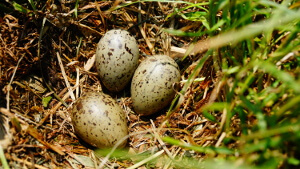
During May, one can find Umineko eggs here, there and everywhere. Be careful when viewing the eggs, and look out for where you put your feet. If you draw too close the parents will perceive you as a threat and move to protect their eggs.
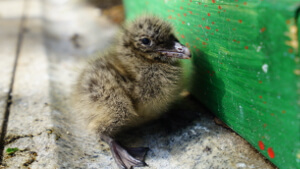
On Kabushima, the black-tailed gull chicks start to hatch one right after another. During this time period the loud cries of ‘mya-mya’ from the adult gulls are mixed with the cute ‘pi pi’ chirps of the chicks. You can catch glimpse of the cute baby birds awkwardly waddling behind their parents as they try and follow them around.
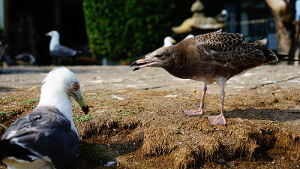
Soon the cute little chicks grow to be as big as the adult birds. Beating their wings here and there, they begin to practices flying. Soon the time for the Umineko to depart and start their long journey away from Kabushima will begin.
Island of faith
One theory about the name of Kabushima Island is that it comes from “Kamu-shima”, meaning “Island of the Gods”. Perhaps the fact that the entire island is covered with yellow rape blossoms, like a divine robe, when the birds arrive in May supports this theory.
The goddess Benzaiten is worshipped at Kabushima Shrine on the island’s peak. She is said to provide safety to fishermen, prosperity in business and good fortune in the performing arts, etc. The shrine was built in 1269. In the Edo era it received the patronage of the Hachinohe Nanbu feudal lord and was permitted to use the “mukai-tsuru” (two cranes facing each other) of the Nanbu family crest as its crest. The shrine has long watched over the Hachinohe region.
In November 2015 the main shrine building was destroyed in a fire. A temporary hall of worship and a shrine office have been set up at the entrance to the island. If the droppings of a black-tailed gull happen to fall on you, please go to the shrine office. Your luck will probably improve. (In Japanese, the word for “droppings” sounds like the word for “luck”.)
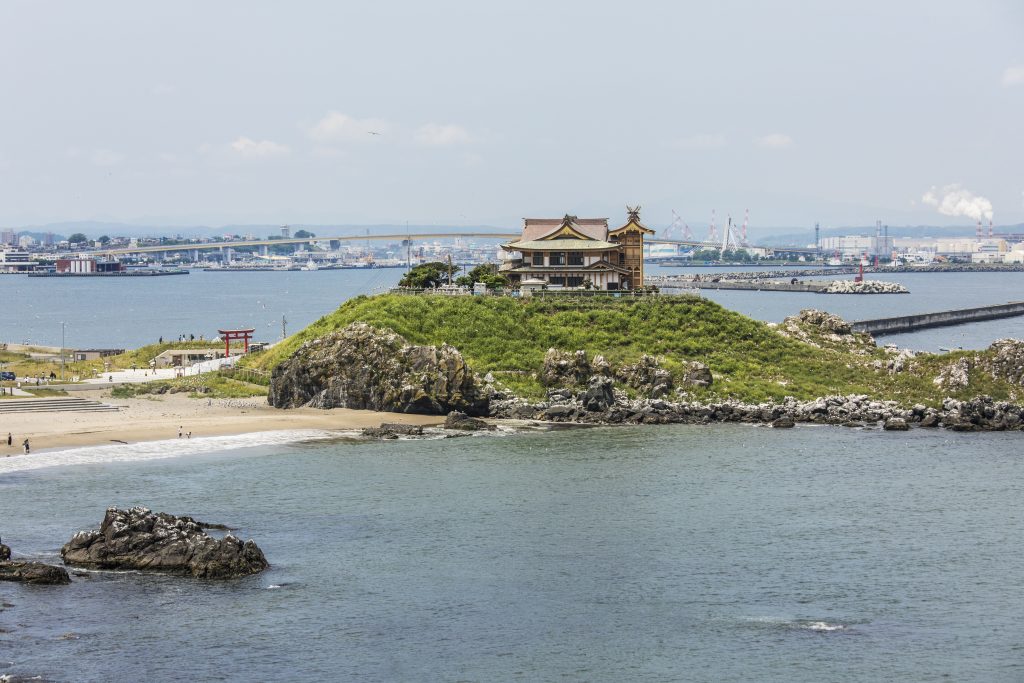
A Distant View of Kabushima: Entrance to the Sanriku Fukko National Park & Tanesashi Coast.
A lighthouse in the grasslands against
a blue sky
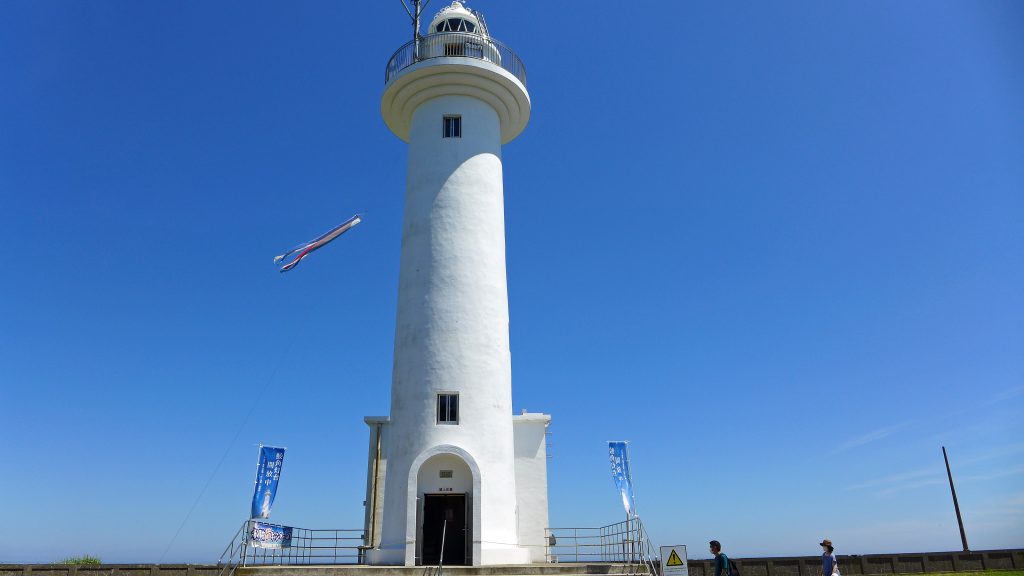
From Kabushima Island, continue along the seashore and take a little detour from Kofunato, a famous sea-level restaurant. The chalk-white Samekado Lighthouse, built in 1938, pokes up above the green of the grasslands. Even now, after 70 years, it is still on active duty as a signpost for the ships that sail back and forth on the sea.
With the imposing expanse of the Pacific Ocean spreading out before it, the lighthouse enjoys one of the best views on the Tanesashi-kaigan Coast. Another pleasure of traveling in the Tanesashi area is taking photos combining the Samekado Lighthouse and the JR Hachinohe Line.
Access

